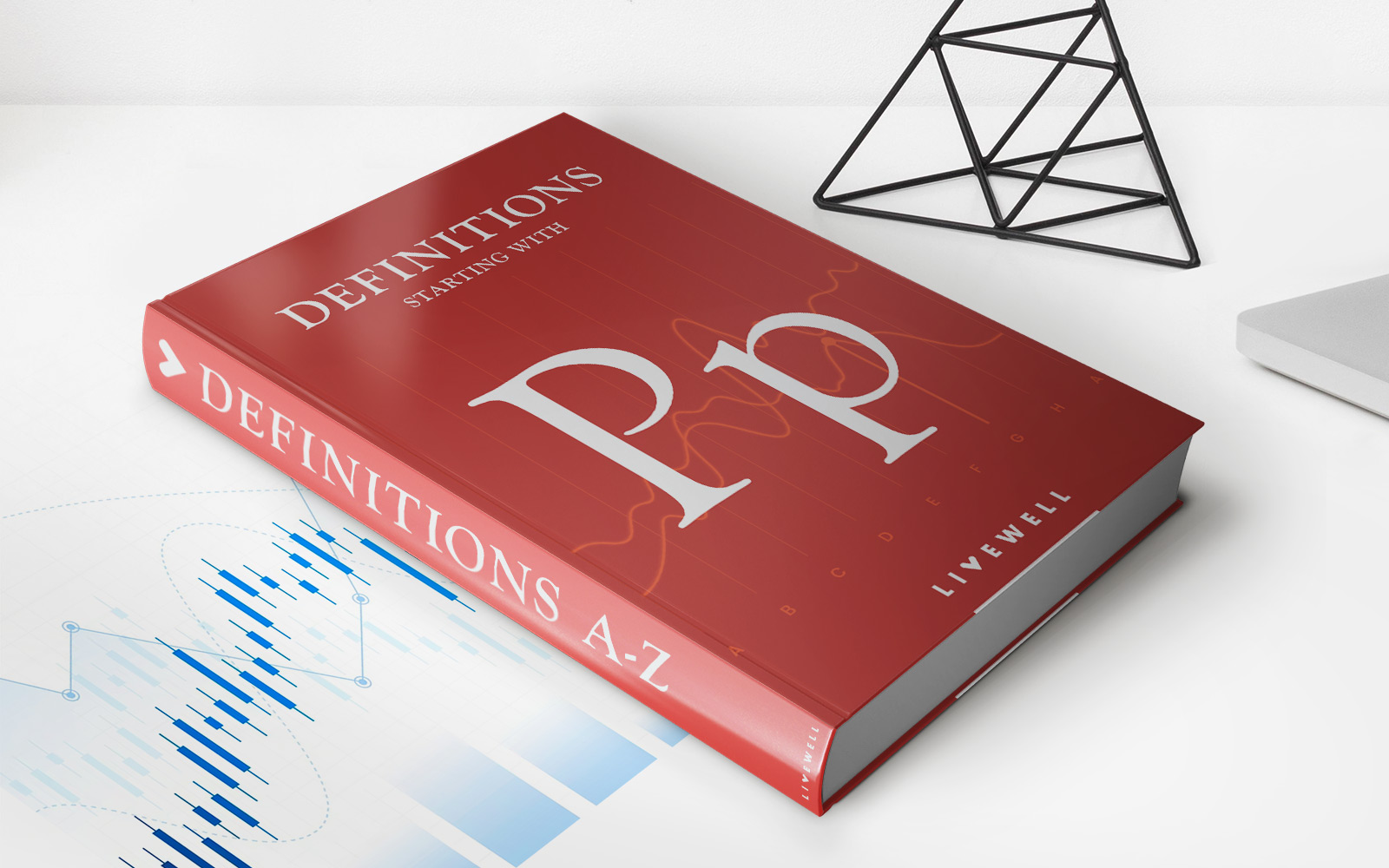Home>Finance>What Happens To Life Insurance When You Leave A Job


Finance
What Happens To Life Insurance When You Leave A Job
Modified: February 21, 2024
Discover what happens to your life insurance policy when you leave a job and how it can impact your financial situation. Learn more about managing your finances and insurance coverage.
(Many of the links in this article redirect to a specific reviewed product. Your purchase of these products through affiliate links helps to generate commission for LiveWell, at no extra cost. Learn more)
Table of Contents
- Introduction
- Understanding Employer-Sponsored Life Insurance
- Options for Life Insurance When Leaving a Job
- Converting to an Individual Policy
- Porting the Policy
- Relying on Group Coverage through Another Employer
- Purchasing a New Life Insurance Policy
- Factors to Consider before Making a Decision
- Cost
- Coverage Amount
- Underwriting Process
- Health Considerations
- Additional Riders and Features
- Conclusion
Introduction
When you leave a job, there are numerous considerations you need to address, one of which is what happens to your employer-sponsored life insurance. Life insurance is an essential financial tool that provides financial protection for your loved ones in the event of your untimely demise. Employer-sponsored life insurance, often offered as part of a benefits package, provides coverage while you are employed. However, when you leave your job, the coverage may no longer be in effect.
Understanding what happens to your life insurance when you leave a job is crucial in order to make informed decisions and ensure you maintain the right level of coverage for your needs. In this article, we will explore the various options you have regarding your life insurance when transitioning out of a job and the factors you should consider before making a decision.
It is important to note that the specific details of your employer-sponsored life insurance plan may vary, so it is essential to review the terms and conditions of your policy and consult with a financial advisor or insurance professional for personalized guidance.
Now, let’s delve into the different options you can consider when it comes to life insurance after leaving a job.
Understanding Employer-Sponsored Life Insurance
Employer-sponsored life insurance is a type of life insurance coverage that is typically provided by an employer as part of an employee benefits package. It is designed to provide financial protection to the employee’s beneficiaries in the event of their death while employed by the company.
There are generally two types of employer-sponsored life insurance: group term life insurance and group permanent life insurance. Group term life insurance is the most common option offered by employers and provides coverage for a specified period of time, usually as long as the employee remains with the company. Group permanent life insurance, on the other hand, offers lifelong coverage and may accumulate cash value over time.
The main advantages of employer-sponsored life insurance are convenience and cost. Through a group plan, employees can often secure life insurance coverage without the need for a medical exam or underwriting process. Additionally, the cost of the premiums is typically lower than what an individual policy might cost, as the employer often subsidizes a portion of the premium.
However, there are some limitations to consider with employer-sponsored life insurance. Firstly, the coverage is tied to your employment with the company. If you leave your job, the coverage may cease or become more expensive if you have the option to convert it to an individual policy. Secondly, the coverage amount may not be sufficient to meet your specific financial needs. Employers often provide a basic level of coverage, which may not be enough to adequately protect your loved ones.
Now that we have a basic understanding of employer-sponsored life insurance, let’s explore the options available to you when you leave a job and the potential implications of each.
Options for Life Insurance When Leaving a Job
When you leave a job, you have several options to consider when it comes to your life insurance coverage. It’s important to carefully evaluate each option to determine the best course of action for your specific situation. Here are four main options to consider:
- Converting to an Individual Policy: One option available to you is to convert your employer-sponsored life insurance policy into an individual policy. This typically allows you to maintain the same coverage amount without the need for a medical exam or underwriting process. However, converting to an individual policy often comes with higher premiums, as you will be solely responsible for the cost.
- Porting the Policy: Some employer-sponsored life insurance policies offer the option to “port” the coverage, meaning you can continue the same policy with the same coverage amount by paying the premiums directly to the insurance company. This can provide a convenient way to maintain your coverage, but it’s important to review the terms and conditions as portability may come with limitations or higher costs.
- Relying on Group Coverage through Another Employer: If you secure employment with another company that offers group life insurance, you may be able to rely on that coverage instead. This can be a viable option if the new employer offers comparable or better coverage and the premiums are reasonable. However, keep in mind that changing jobs may result in a coverage gap, so it’s important to ensure you have uninterrupted protection throughout the transition.
- Purchasing a New Life Insurance Policy: Another option is to purchase an individual life insurance policy separate from your employer. This can provide flexibility and ensure that you have coverage that meets your specific needs, regardless of your employment status. It’s important to compare different policies and consider factors such as coverage amount, premiums, and additional features, such as riders, when choosing a new policy.
Each option has its own pros and cons, so it’s essential to evaluate the specifics of your situation, your financial goals, and the overall cost considerations before making a decision.
In the next section, we will discuss key factors to consider when deciding on the best course of action regarding your life insurance after leaving a job.
Converting to an Individual Policy
One option available to you when leaving a job and losing your employer-sponsored life insurance is to convert the policy into an individual life insurance policy. Converting to an individual policy allows you to maintain the same coverage amount without the need for a medical exam or underwriting process.
Converting your employer-sponsored life insurance policy to an individual policy offers several advantages. Firstly, it enables you to continue your coverage seamlessly without any gaps in protection. This can be especially beneficial if you have pre-existing health conditions or if your insurability has changed over time. Additionally, converting to an individual policy allows you to customize your coverage based on your specific needs and financial goals.
However, it’s important to be aware of potential disadvantages of converting to an individual policy. One significant drawback is the cost. Converting your employer-sponsored policy often results in higher premiums compared to what you were previously paying. This is because the group rates offered by employers are typically lower due to the larger pool of insured individuals. Additionally, the cost of the individual policy may increase as you age, making it more expensive in the long run.
Before deciding to convert your policy, carefully review the terms and conditions provided by the insurance company. Some policies may have limitations or restrictions on conversion, such as a specific timeframe in which you must make the conversion or certain exclusions on coverage. It’s important to fully understand these details to make an informed decision.
When considering the conversion option, it’s also advisable to compare the cost and features of the individual policy with other insurance options available in the market. This will help you determine if converting is the most cost-effective choice for maintaining your life insurance coverage.
In summary, converting your employer-sponsored life insurance policy to an individual policy allows you to continue your coverage without the need for a medical exam or underwriting process. While it offers continuity and customization, it’s important to carefully evaluate the cost and terms of the individual policy to ensure it aligns with your financial goals and needs.
Porting the Policy
If your employer-sponsored life insurance policy offers the option to “port” the coverage, you have the opportunity to continue the same policy with the same coverage amount by paying the premiums directly to the insurance company. Porting your policy can provide a convenient way to maintain your life insurance coverage when you leave your job.
Porting the policy offers several advantages. Firstly, it allows you to keep the same coverage amount without the need for a medical exam or underwriting process. This can be beneficial if you have experienced changes in your health since obtaining the policy, as it provides a way to maintain coverage despite any new health conditions.
In addition to continuity of coverage, porting the policy may also offer some flexibility. You can continue the policy even if you change jobs or become self-employed, ensuring uninterrupted financial protection for your loved ones.
However, it’s important to carefully review the terms and conditions of portability before making a decision. Some policies may have limitations or restrictions on porting, such as a specific timeframe in which you must exercise the option or certain exclusions on coverage. Additionally, porting the policy may result in higher premiums compared to what you were previously paying through your employer. It’s crucial to consider the cost implications and compare the premiums with other insurance options available in the market to ensure you are making a financially sound decision.
Furthermore, keep in mind that porting the policy does not allow you to increase your coverage amount. You will typically only be able to maintain the same level of coverage you had through your employer-sponsored policy. If you require a higher coverage amount, you may need to explore other options, such as purchasing an additional individual life insurance policy.
Before deciding to port your policy, carefully assess your current needs and future goals. Analyze the cost-effectiveness and the suitability of the coverage amount to ensure it aligns with your financial objectives. Consulting with a financial advisor or insurance professional can also provide valuable guidance in making an informed decision.
In summary, porting your employer-sponsored life insurance policy allows you to maintain the same coverage amount without a medical exam or underwriting process. It offers continuity and flexibility, but it’s essential to review the terms and conditions and consider the cost implications before deciding to port the policy.
Relying on Group Coverage through Another Employer
When leaving a job, one option for continuing your life insurance coverage is to rely on group coverage through another employer. If you secure employment with a new company that offers group life insurance as part of their benefits package, you may be able to enroll in their plan and maintain the necessary coverage for your financial protection.
Relying on group coverage through another employer has several advantages. Firstly, it allows for a seamless transition and ensures that you have uninterrupted life insurance coverage as you move from one job to another. This can provide peace of mind and financial protection for your loved ones. Additionally, group coverage often comes at a lower cost compared to individual policies because the premiums are typically subsidized by the employer.
However, it’s important to carefully review the terms and conditions of the new group life insurance policy before relying on it as the sole source of coverage. Take note of any waiting periods or restrictions on coverage, as some policies may have eligibility requirements or limitations on the amount of coverage you can obtain. It’s important to ensure that the group coverage offered by your new employer meets your specific needs and provides adequate financial protection.
It’s also important to consider the potential gap in coverage between leaving your previous job and starting the new one. If there is a period of time between jobs where you are not covered by any life insurance, you may want to explore other options, such as converting your existing policy or purchasing an individual policy to bridge the gap. This will ensure that you have continuous protection during the transition.
Furthermore, keep in mind that relying on group coverage through another employer may not provide the level of customization and additional features that an individual policy can offer. Group life insurance policies typically have standard coverage amounts and limited options for riders, such as accelerated death benefit or waiver of premium riders. If you have specific needs or require additional coverage features, you may need to supplement your group coverage with an individual life insurance policy.
Before making a decision to rely on group coverage through another employer, carefully evaluate the terms, coverage amount, and any limitations of the policy. Consider your long-term financial goals and consult with a financial advisor or insurance professional to ensure you are making the best decision for your specific situation.
In summary, relying on group coverage through another employer can provide a cost-effective way to maintain life insurance coverage when transitioning from one job to another. However, it’s important to review the terms and conditions, consider any coverage gaps, and assess if additional individual coverage may be needed to meet your specific needs.
Purchasing a New Life Insurance Policy
If you leave a job and your employer-sponsored life insurance coverage is no longer sufficient or available to you, one option to consider is purchasing a new individual life insurance policy. By purchasing a new policy, you can customize your coverage to meet your specific needs and ensure that you have the appropriate financial protection in place.
Purchasing a new life insurance policy offers several advantages. Firstly, it provides you with the opportunity to select the coverage amount that aligns with your financial goals. You can choose a coverage amount that adequately provides for your loved ones’ needs and considers factors such as outstanding debts, future education expenses, and income replacement.
Additionally, purchasing a new policy allows you to access a wider range of insurance products and options. You can choose from various types of life insurance, such as term life insurance, whole life insurance, or universal life insurance, depending on your specific needs and preferences. You also have the flexibility to add additional riders, such as a critical illness rider or a disability income rider, to enhance your coverage.
When purchasing a new life insurance policy, it’s important to go through the underwriting process, which may involve a medical exam and a review of your health history. This ensures that the insurance company accurately assesses your risk and determines the appropriate premiums for your policy. It’s essential to provide accurate and comprehensive information during this process to ensure that your policy is valid and that your loved ones will receive the intended benefits.
Before purchasing a new policy, consider the cost implications and compare premiums from different insurance providers. It’s also advisable to review the financial stability and reputation of the insurance company to ensure that they can fulfill their obligations in the event of a claim.
It’s important to note that purchasing a new life insurance policy may be the most suitable option if you require a higher coverage amount, desire more customization, or prefer to have an individual policy that is not dependent on your employment status.
In summary, purchasing a new life insurance policy allows you to tailor your coverage to meet your specific needs and financial goals. It provides flexibility in terms of coverage amount and product options, but it requires undergoing the underwriting process and evaluating the cost and financial stability of the insurance company.
Factors to Consider before Making a Decision
When deciding what to do with your life insurance after leaving a job, it’s important to carefully evaluate the following factors in order to make an informed decision:
- Cost: Consider the cost implications of each option. Evaluate the premiums of converting, porting, relying on group coverage, or purchasing a new policy. Compare the costs with the coverage amount and features to ensure the best value for your money.
- Coverage Amount: Assess your coverage needs to determine if the existing coverage through conversion or porting is sufficient, or if you need to supplement it with additional coverage. Consider your financial obligations, dependents, outstanding debts, and future expenses to determine the appropriate coverage amount.
- Underwriting Process: Understand the underwriting process involved in each option. Some options, such as converting or porting, may not require a medical exam or extensive underwriting, while purchasing a new policy will involve a thorough evaluation of your health history. Evaluate your eligibility and comfort level with the underwriting process for each option.
- Health Considerations: Take into account any changes in your health since obtaining your employer-sponsored policy. If you have experienced health conditions or if your insurability has changed, conversion or porting may be beneficial as they generally do not require additional medical underwriting.
- Additional Riders and Features: Consider any additional riders or features you may need in your life insurance policy. Riders such as accelerated death benefit, waiver of premium, or critical illness riders can provide added protection and flexibility. Evaluate if the available options through conversion, porting, group coverage, or purchasing a new policy meet your specific requirements.
It’s also advisable to consult with a financial advisor or insurance professional who can provide guidance tailored to your individual needs. They can help you navigate the complexities of life insurance options and assist in selecting the best course of action based on your financial situation and goals.
By carefully considering these factors, you can make an informed decision regarding your life insurance after leaving a job and ensure that you have the appropriate coverage in place to protect your loved ones.
Cost
One of the key factors to consider when evaluating your options for life insurance after leaving a job is the cost associated with each alternative. Cost plays a significant role in determining which option is the most viable for your financial situation and budget.
When assessing the cost, it’s important to consider both short-term and long-term factors. Short-term costs include immediate premiums, conversion fees, or any charges associated with porting the policy. These costs can vary depending on the insurance provider, the coverage amount, and your age and health at the time of the transition.
For example, converting your employer-sponsored policy to an individual policy often comes with higher premiums. This is because the group rates offered by employers are generally lower due to the larger pool of insured employees. Additionally, the cost of the individual policy may increase as you age, making it more expensive in the long run.
Alternatively, porting the policy may also result in higher premiums compared to what you were paying through your previous employer. It’s essential to carefully review the terms and conditions, including the premium structure, and compare them with other insurance options available in the market. It’s possible that purchasing a new individual policy or relying on group coverage through another employer may offer more cost-effective options.
When considering the cost, it’s important to balance it with the coverage amount. Ensure that the cost is reasonable and affordable for the level of financial protection you require. You don’t want to overspend on premiums that exceed your needs, nor do you want to have inadequate coverage due to cost constraints.
Comparing quotes from different insurance providers is an effective way to determine the most cost-effective option. Insurance companies assess premiums based on various factors, including age, health, lifestyle, occupation, and the type and amount of coverage. Obtaining multiple quotes and reviewing the coverage details will help you make an accurate cost comparison and select the most suitable life insurance option for your budget.
Ultimately, it’s important to strike a balance between affordability and the level of coverage you need. While cost is an important consideration, prioritize having adequate protection for your loved ones in the future. Working with a financial advisor or insurance professional can provide valuable insights and guidance on selecting an option that aligns with your financial goals.
Coverage Amount
Another crucial factor to consider when evaluating your life insurance options after leaving a job is the coverage amount. The coverage amount determines the financial protection that will be provided to your loved ones in the event of your passing. It is essential to assess your coverage needs to ensure that your policy offers sufficient funds to meet your family’s financial obligations and future goals.
When assessing the coverage amount, consider various factors such as outstanding debts, mortgage payments, education expenses for your children, and the income replacement needs of your family. The purpose of life insurance is to provide financial security and peace of mind, ensuring that your loved ones can maintain their quality of life even in your absence.
If your employer-sponsored life insurance coverage was minimal, it might be necessary to explore additional coverage options. For example, converting your policy to an individual policy or purchasing a new one can give you the flexibility to choose a coverage amount that better aligns with your present and future needs.
It’s important to take into account any changes in your circumstances since obtaining the employer-sponsored policy. Have you taken on more significant financial responsibilities? Has your family size increased? These factors can impact the amount of coverage you require.
Consider consulting with a financial advisor or insurance professional who can help you assess your coverage needs accurately. They can guide you through the process of estimating the amount of coverage required based on your specific financial situation and goals.
Remember, it’s better to err on the side of slightly higher coverage rather than insufficient coverage. Adequate protection brings peace of mind and ensures that your loved ones will have the necessary financial support to maintain their lifestyle, cover expenses, pay off debts, and plan for the future.
To determine the appropriate coverage amount, review your financial obligations, projected future expenses, and income replacement needs. This evaluation will help you select the option that provides the necessary coverage to safeguard your family’s financial well-being in the long run.
Underwriting Process
The underwriting process is an important factor to consider when evaluating your life insurance options after leaving a job. It refers to the evaluation that insurance companies undertake to assess your risk level, determine your insurability, and calculate the premium rates for your policy.
When converting your employer-sponsored policy to an individual policy, the underwriting process may be minimal or even waived altogether. This can be advantageous if you have experienced changes in your health since obtaining the policy or if you have pre-existing health conditions. By bypassing the underwriting process, you can maintain your coverage without any potential increase in premiums due to changes in your health.
Porting the policy or relying on group coverage through another employer may also involve limited underwriting, particularly if there are no changes in your health or other circumstances. The insurance provider may primarily review your eligibility and assess any changes to the policy terms and conditions before granting approval.
However, when purchasing a new life insurance policy, the underwriting process is more comprehensive. It typically involves completing a detailed application form, undergoing a medical examination, and providing documentation related to your health history, lifestyle, and financial information. The insurance company will assess your overall health, medical records, family history, and any other factors that may impact your risk level.
The underwriting process is crucial as it enables the insurance company to accurately assess your risk and determine the premium rates for your policy. Consequently, your health, age, and any underlying medical conditions can affect the cost of the policy. Insurance companies generally offer more favorable rates to individuals who are in good health and have a low risk of premature death.
It’s important to be prepared for the underwriting process by ensuring you have all the required information and documentation readily available. This will help expedite the process and provide a more accurate assessment of your insurability. It’s also essential to provide accurate and comprehensive information to the insurance company to prevent any issues with your policy in the future.
If you have concerns about the underwriting process due to a specific health condition or other factors, consulting with an insurance professional or financial advisor can provide valuable guidance. They can help you navigate the process and identify insurance providers who are more likely to offer favorable terms based on your individual circumstances.
Overall, understanding the underwriting process is essential when considering your life insurance options. It allows you to assess the level of scrutiny and potential premium implications associated with each option based on your health and other factors. This knowledge will help you make an informed decision regarding the most suitable life insurance option for your needs.
Health Considerations
Health considerations play a crucial role in determining your life insurance options after leaving a job. Your health status can impact the availability, cost, and terms of coverage. It’s important to assess your health condition and any changes that have occurred since obtaining your employer-sponsored life insurance policy.
If your health has remained stable or improved, you may have more flexibility in terms of the options available to you. Converting your employer-sponsored policy to an individual policy or porting the coverage may be viable choices as they often do not require a medical exam or extensive underwriting. This can be advantageous if you have developed new health conditions or if your insurability has changed negatively.
On the other hand, if you have experienced significant health issues or if your health has deteriorated, the options available to you may be limited. In such cases, purchasing a new individual policy may be the best approach. Although it will involve a thorough underwriting process, it ensures that you have coverage tailored to your current health condition and specific needs.
When undergoing the underwriting process, it’s important to provide accurate and comprehensive information about your health history. Failing to disclose any relevant health information could result in your policy being voided in the future. Insurance companies conduct thorough reviews of medical records and may request additional tests or documentation to assess your health status accurately.
Keep in mind that certain health conditions may result in higher premiums or exclusions on coverage. Common factors that can impact premium rates include a history of heart disease, cancer, diabetes, or other chronic illnesses. Insurance providers may also consider habits such as smoking or engaging in risky activities when determining your premium rates.
If you have concerns about your health impacting your life insurance options, it’s advisable to consult with an insurance professional or financial advisor who specializes in insurance. They can provide guidance on navigating the application process and help identify insurance providers that are more likely to offer favorable terms based on your specific health condition.
Remember that life insurance is designed to provide financial protection for your loved ones in the event of your passing. While health considerations may affect your options, it’s important to explore the available avenues to ensure that you have sufficient coverage to meet your family’s financial needs.
In summary, evaluating your health considerations is crucial when deciding on the best life insurance option after leaving a job. Assess any changes in your health since obtaining your employer-sponsored policy, disclose all relevant health information during the underwriting process, and consult with professionals who can guide you based on your specific health condition and needs.
Additional Riders and Features
When considering your life insurance options after leaving a job, it’s essential to evaluate the availability of additional riders and features that can enhance your coverage. These riders offer additional benefits and can provide increased flexibility and protection to better align with your specific needs and goals.
Some common riders include:
- Accelerated Death Benefit Rider: This rider allows you to receive a portion of the death benefit if you are diagnosed with a terminal illness or a qualifying condition. It can provide financial support for medical expenses or quality-of-life enhancements during your lifetime.
- Waiver of Premium Rider: With this rider, if you become disabled or unable to work due to illness or injury, the insurance company waives the premium payments on your policy. This ensures that your coverage remains in force even if you are unable to pay the premiums.
- Child Term Rider: This rider provides coverage for your children, usually until they reach a certain age. It offers peace of mind by providing a death benefit if a child were to pass away.
- Spousal Rider: This rider allows you to add your spouse to your policy, providing them with coverage and peace of mind. It can be a cost-effective way to ensure both you and your spouse are protected.
- Guaranteed Insurability Rider: With this rider, you have the option to increase your coverage in the future without undergoing additional underwriting. This can be valuable if you anticipate a need for more coverage as your financial responsibilities grow.
These are just a few examples of the many riders and features available with life insurance policies. Each option has its own benefits and considerations, and the availability may vary depending on the insurance provider and policy type.
When evaluating your life insurance options, carefully review the available riders and features associated with each alternative. Consider whether these additional benefits align with your specific needs and financial goals. Assess the cost of adding these riders and compare it to the potential benefits they offer.
Keep in mind that some riders may be included in certain policies while others may come at an additional cost. It’s important to fully understand the terms and conditions of each rider and assess their value in relation to your unique situation.
Consulting with a financial advisor or insurance professional can provide valuable insights into the various riders available and help you determine which options make sense for your specific needs. They can assist in customizing your life insurance coverage to provide the appropriate level of protection and flexibility for your family.
In summary, exploring the additional riders and features associated with life insurance policies is crucial when assessing your options after leaving a job. Consider the riders that align with your needs and understand their cost and benefits. Working with professionals can guide you in selecting the most suitable riders and features to enhance your coverage.
Conclusion
Leaving a job can have various implications for your life insurance coverage, and understanding your options is essential to ensure that you maintain the necessary financial protection for your loved ones. Evaluating factors such as cost, coverage amount, underwriting process, health considerations, and additional riders and features can help you make an informed decision regarding your life insurance after leaving a job.
Converting your employer-sponsored policy to an individual policy can provide continuity of coverage without the need for additional underwriting. Porting the policy or relying on group coverage through another employer can offer convenient options, but it’s important to review and compare the terms carefully. Purchasing a new policy allows for customization and flexibility but involves undergoing a comprehensive underwriting process.
Factors such as cost and coverage amount should be evaluated based on your financial goals and the needs of your family. Health considerations can affect the availability and cost of coverage, while the inclusion of additional riders and features can enhance the benefits of your policy.
Ultimately, selecting the best life insurance option requires careful consideration and a personalized approach. It’s advisable to consult with a financial advisor or insurance professional who can provide expert guidance based on your unique circumstances and objectives.
By assessing your options and considering these factors, you can choose a life insurance solution that provides the appropriate coverage, aligns with your budget, and offers the necessary financial protection for your loved ones. Remember that life insurance is a crucial component of your overall financial plan, and it’s essential to regularly review and update your coverage as your circumstances change over time.
Take the time to explore your options and make an informed decision to safeguard the financial future of your loved ones. Life insurance provides peace of mind, ensuring that your family will be taken care of even in the face of unexpected circumstances.














